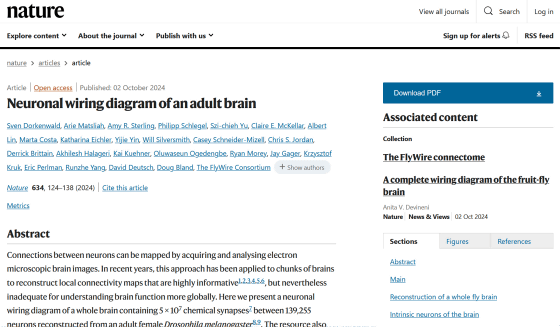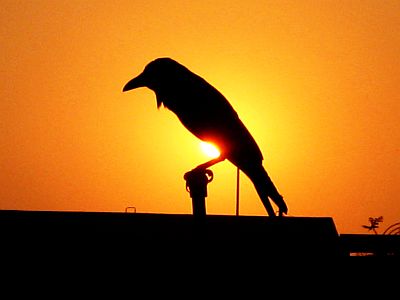Large team of scientists successfully maps the complete brain of a fly, a major step towards understanding the human brain

Neuronal wiring diagram of an adult brain | Nature
https://www.nature.com/articles/s41586-024-07558-y

Mapping an entire (fly) brain: A step toward understanding diseases of the human brain
https://www.princeton.edu/news/2024/10/02/mapping-entire-fly-brain-step-toward-understanding-diseases-human-brain
Tiny brain, big deal: fruit fly diagram could transform neuroscience | Neuroscience | The Guardian
https://www.theguardian.com/science/2024/oct/02/fruit-fly-brain-connections-wiring-diagram-neuroscience
FlyWire, led by Princeton University and consisting of members from 146 laboratories across 122 research institutions, is a consortium that aims to create a whole-brain connectome of the fruit fly Drosophila melanogaster, a detailed map of neural circuits that represent the neurons and synapses that make up an organism's nervous system.
Previously, researchers have successfully mapped the brains of worms , which have 302 neurons, and larval fruit flies, which have 3,000 neurons. But adult fruit flies have much more complex brains, with around 140,000 neurons and 50 million synapses.
Mara Murthy, director of the Princeton Neuroscience Institute, said, 'How the brain works depends heavily on which neurons are connected to which neurons and the strength of the connections.' Neuroscientists tend to simplify things by looking at a single neuron, but Murthy argues that to understand how neurons work, it is necessary to look at the complex network of the entire brain, not just at individual neurons.
Murthy launched FlyWire with Princeton University neuroscientist Professor Sebastian Seung in 2018. The project was spearheaded by Sven Delkenwald , who will receive his doctorate from Princeton in 2023 and is currently enrolled at the Allen Institute for Brain Science.
'Just like you wouldn't want to drive to a new place without Google Maps, you wouldn't want to explore the brain without a map,' said Delkenwald. 'What we've done is build an atlas of the brain, annotating the names of every business, building, and street. This will allow researchers to navigate the brain more thoughtfully as they try to understand it.'

The fruit fly brain is extremely small, measuring approximately 750
The AI model developed by Seung and his team was used to convert the images into 3D maps, and humans were responsible for checking and labeling the results. Now, in nine related papers, they report that they have created a whole-brain connectome of a fruit fly.
The team has already published the whole-brain connectome of Drosophila melanogaster on a webpage called FlyWire Codex , where interested researchers can download reams of data and explore the pathways of neurons and synapses. 'From day one, we opened up our data to the fly research community and said, 'Do whatever science you want, but help us proofread and annotate,'' says Murthy.
'Now that we have this brain map, we can close the loop on which neurons are associated with which behaviors,' said Delkenwald. 'New experiments will generate new hypotheses, which we can then replicate in the context of the whole connectome, which is exciting. The hard work is just beginning. This is just the beginning, not the end.'

Although the human brain is much more complex than the fruit fly's brain, the fruit fly shares 60% of human DNA with the human, and about 75% of human genetic diseases have similarities with the fruit fly. Therefore, understanding the fruit fly brain is expected to be a stepping stone to understanding more complex brains like the human brain.
'This is a major achievement - there is no other complete brain connectome for such a complex adult animal,' said Seung. 'With the fly connectome, we have the potential to understand the brain in unprecedented detail and depth.'
Related Posts:







